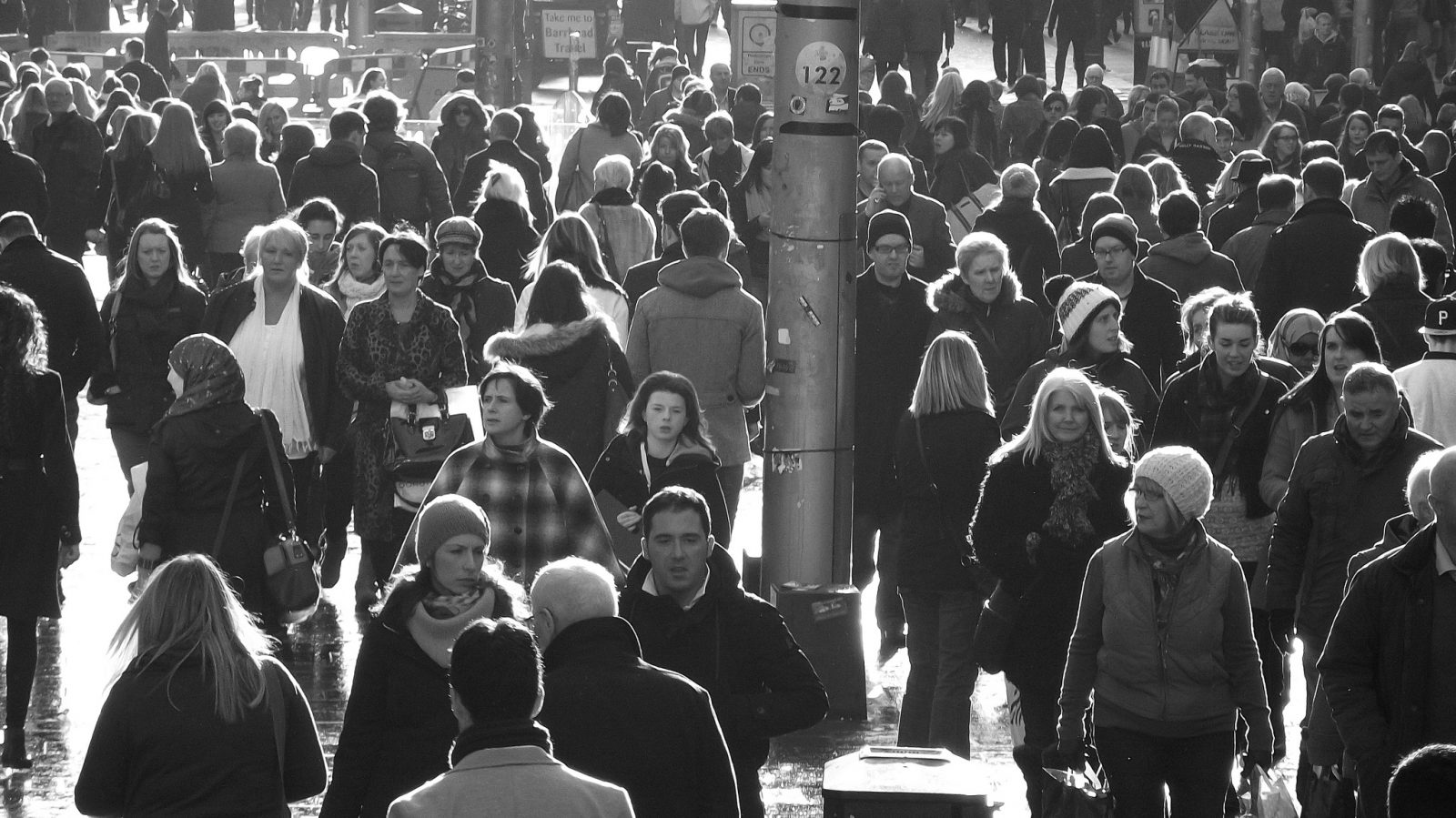The major interest of my life has always been finding truth about the present language of media, man, environment, culture, and new technology. Several memories from my life are the real history which shaped my manner of the vision of this world.
In Poland, in the years 1965-1990 you couldn’t get your telephone line installed in one day. My parents waited for their own telephone line for 25 years. During this time they paid every monthly payment to receive the massage: “not this year, but maybe next one we will allow you to participate in the progress technology. You are on the list #255.345”. At the beginning we took this massage very seriously, but after a few years, with all respect we just smiled and joked about it.
In the year 1980, I was then 9 years old and my father bought our first camera. It was so small that you would not feel ashamed giving it as a gift to James Bond. My dad also did not believe that man could construct so small a device which would make a normal photo. Then he untwisted the device, wanting to find out how it was created, fascinated with new technical possibilities of man’s thinking. But when he tried to put all the small parts together again, it was not possible. This was the first and last day, when were happy with our family camera…
In the year 1990, at my college I was a part of one of the computer classes in Poland. The first computer, ZX Spectrum charmed me with LOGO, a new technological language that we learned in a lab. My dream was to have my own computer. I was so impressed, and I waited for my first computer over two years. Not that we did not have enough money to buy it, but because one could not get one. All computers were at that time delivered to instructors, teachers, and prominent people; or to persons who had connections. My first computer was produced by Timex, made in Portugal. I remember this day until today very well. Six years later, I constructed a PC computer from parts, just what I always wanted. I bought the motherboard, CPU, memory, hard drive, graphics card, case and monitor. In the store, I was shocked to see my first computer, the Timex, secured with a nail to the wall as a decoration. Then, at this moment of my life, I understood how quickly transformation comes: electronics, information, speed, computers, radio, television and internet. The experience of seeing my beloved computer used only for decoration opened my eyes to this reality about change.
The history of the last 25 years changed the manner of communication among people. Those memories affect me and move me to write some reflections about what I observe in the “media world”. I agree with what Neil Postman says about how the printing press, telegraph, photography, broadcasting and television change our language, thought, image, creativity, technology, imagination, and finally reality. Resulting in what we have today.
I would like to devote some time to the device which I think revolutionized our manner of seeing this world. I am a photographer, taking on my own over 80,000 photo pictures which I have on my hard drive. They remind me of scenes from my life: people, places, events, time. From these photos I can recognize these important seconds of my life recorded with my camera.
Language
A decisive moment in the mass communication was “the Gutenberg printing press”. Today however, pressing the shutter of the camera to make a commemorative photo, not many people reflect on the history of the device which began the change of our manner of the perception of this world. This evolution changed our vision of reality to a sequentional vision.
Time and space stopped existing in a cyclical understanding. People stopped time in order to value, the dynamic of the “split second”, the unrepeatable moment. They could at last “catch” the moment, which until now irrevocably passed with time. Because of the camera we have achieved what we always dreamed about. People could at last return “tangibly” to what was already passed, that is to say they could participate in the past. They proved consequently, that our lives at this moment, these fractions of seconds, which in the commonplaceness of time can pass as imperceptible, can (thanks to the camera) be “tangibly perceptible”. Later came into being the idea of the creation of the film projector. These devices revolutionized communication between people. It changed the language which people used. I agree with Neil Postman about the mass media language, that “a picture is worth a thousand words. Maybe so. But it is probably equally true that one word is worth a thousand pictures, at least sometimes – for example, when it comes to understanding the world we live in.”[1] In today’s media language the word was exchanged for images. The imagination, that is to say the composition of the mind of the man, replaced the word with an image which speaks what and how man thinks. In other way the image is supported by word and image has a much more power.
There are two results of this new way of seeing. The first is passiveness in the reception of information which on one hand releases the viewer from the personal thinking. The second result prompts creativity. Television impels man not to creative life, but rather to “the commenting” on the reality in which the image was found. Such is the work of today’s media.
One year ago I met with a friend of mine to invite him to write some articles for a magazine in Krakow (Poland) for which I usually I write. He sad to me: “I was not born to describe or create, but to give only a commentary.” Passive distance from reality is one of the most important mistakes made by real people in today’s media culture.
Thought
The camera, as one of these media which are improved and perfected all the time with scientific research in optics, mechanics, physics, also helped with aesthetics and art. And the artistry still has its own highs and lows. Every time however attempt to free this world of „the cage of the frame”. The new electronic medium always restricted, restricts and will restrict the perspective. The manner and the visual angle determines in what people participate, with what they will live. Media by their own nature will never show to us the state of the reality which we want to describe and represent. The medium itself lies. It does not tell the whole truth. Media devices, and this includes the camera are not only transmitters of the information which people send, but also distorters of the information. This information is modified by the medium itself. Consequently, the information is subject to the imperfect form. Still, this information – modified by the medium – reaches us, shapes our consciences, looking at the reality and the world, wherein we live.
It is necessary to make allowance for the difference between content and form, at every use of the medium. Life can exist without media but media can’t exist without life. Moving in the real world, events “from behind the frame” often have the most important meaning. Because of them we make decisions. And because media are only transmitters of what we want to present, no medium will ever be in a position to give back en bloc the reality in which we participate. The lens itself restricts the field of vision. This limits human recognition, and, in turn, limits thoughts, conditioned with images through media. The image limits education to a small component of what is seen and thus does not give a complete view of realities in which we now participate.
Image
The image, captured from reality for the present, will always be on the past, the situation which already happened, has already take place, is already behind us. Even if the image were only a second before, that second is already the past. The camera always will represent and show us only the past but, since it represents the past as present, the image is always imperfect. Neil Postman said something similar, that:
“Pictures, especially single pictures, speak only in particularities. Their vocabulary is limited to concrete representation. Unlike words and sentences, a picture does not present to us an idea or concept about the word, except as we use language itself to convert the image to idea. By itself, a picture cannot deal with the unseen, the remote, the internal, and the abstract. It does not speak of ‘men’, only of a ‘man’; not of ‘tree, only of a tree. You cannot produce an image of “nature”, any more than an image of ‘the sea’. You can only show a particular fragment of the here-and-now – a cliff of certain terrain, in a certain condition of light; a wave at a moment in time, from a particular point of view. And just as ‘nature’ and ‘the sea’ cannot be photographed, such larger abstraction as truth, honor, love, and falsehood cannot be talked about in the lexicon of individual pictures.”[2]
This is true and I agree with Postman. If we reflect what the rudiments of the photograph are we see that photography is… the image. Painters in numerous attempts (more or less successful) capture for the receiver on the canvas, what they saw. They wanted to express on wooden frames the reality which they saw, experienced, and recognized. With the brush they “drew the state of their own soul” which moved with their inspiration, showed their reality which included much that was for many invisible, and outright inaccessible. They opened the door to dark elements in looking into what happened around them. In images they showed castles, battles, and more. Most importantly however they always showed… man, whom in his own pride was shown as “the creator of this world”.
Creativity
Artists-painters made a great contribution to the idea, a wish to create a device which would be able “to stop the world on the moment”. They made this however less rather than more consciously. Only philosophy and the positivistic ideology and independent scientific (English and French) explorers contributed to the beginning of this medium. From the moment of the photographs first appearance in the world, in the year 1839, began simultaneously exist two trends (two theories) of the hermeneutics of the photograph.
First, in compliance with the attitude of the positivistic philosophy, the mimetic proprieties of the photograph, add values to the pictures. The more it shows the truth about the nature of the world. The value of the photograph is not ruled by the composition of the photo (in this model composition is secondary), but rather by the function of recognition. Only the truth contained in the photograph makes the structure and aesthetic form of value.
The second trend of the hermeneutics of the photograph harkens back to the idea of the image as being a determent place within the canons of fine arts. Every picture is obliged to conform to standard rules and canons, such as: composition, perspective, chiaroscuro, elements which defined painters of previous epochs. Until today, this trend has many advocates, because more and greater technical possibilities which approach perfection in their ability “fix and to deliver” perceived reality.
Thereby comes into being the question: whether the photograph creates the reality, or whether reality creates the photograph. If to this dilemma we add such notions as: the choice of the theme of the photograph, the chance of the event wherein the photo was made, and we will include in this the sub conscious of the photographer, then the process of the creation of the photograph extends its own meaning. There open new horizons and possibilities. The exploration of predispositions creative and cognitive of the photographer opens new understanding of the forms of the expression.
Neil Postman wrote about how we express ourselves. It is three cases of truth-telling: 1. speaking, 2. writing and printing, and 3. spoken writing shows that culture moved from ‘orality to writing to painting to televising’. This process changed human communication system, thinking and existing life. Present time is dominated by television who created culture based by information, ideas and epistemology.[3]
Unfortunately, extensive use of the camera by many people has the unfortunate tendency of belittling of the element of creation and artistry in the completed photo. Today, the low cost of photography and the ease of it makes us unreflective. This automatic nature does not often spur reflection, does not encourage creativity. Ready availability sometimes leads to popular rubbish. The creative element of the photo plays with light, angle of the camera, saturation of colors, shadows. Automation of such elements may oust such creative elements from consciousness of the photographer leaving only archive photos, thus losing originality and aesthetic values. The art of photography often involves waiting indefinitely, with nimble fingers, a creative mind and a heart soaked through with the beauty and the intuition of the moment. Along with these elements, it also requires skills, predispositions, experience, familiarity of the possibility of the equipment which with one works, as well as the long practice of the teaching oneself with errors and success.
Painter’s pictures as well as photographs give back the reality of the moment of the past, that is to say the moment of the moment. This consequence of creativity in the process I would call: “reflection on the picture”. The painting and the photograph are both descriptive forms. They follow the same principles and they both require the same creativity.
Technology
The photographer, both on the level of the technological and the artistic is visual, and the result represents a subconscious endeavor of the photographer in the recognition of the truth of the moment. Every medium is by nature imperfect in the remittance of the information, and here the extraction of the truth from the photo always will be an arrangement of puzzles of an infinite quantity of elements, new combinations, and consequently new possibilities.
Given greater technological possibilities, the photograph has huge abilities both cognitive and interpretative, far and beyond that of painting. Photography is in so advanced a state that it can penetrate into the smallest humans elements (for example the cell phone), but also can show the largest in the universe, in still undiscovered space (the landing of the man on the Moon). The universality of the penetration into what is least and greatest in this world fascinates today’s huge crowds of people, thirsty for knowledge of their place on earth. It is a race of time with technology for the photograph not to disfigure the human person, but outright to show the beauty of the place and the situation in which it is found.
Imagination
We live in the world dominated by pictures which today more quickly and more efficiently affect our imagination. Words wasted their power. Because of our use of image, words have become devoid of dignities, meanings and reliabilities. The picture more quickly brings us near to the entire truth which we want to deliver and to take. Words can not give us the image in its totality. The visualization of the truth, especially in the event of the photograph, gains on the veracity of things just as they are: the photograph, triumphs over the truth expressed by words.
The photograph stopped time, permitting insight into the past. The reflection over the fraction of reality that has been photographed permits us to question: whether the photograph shows to us only the past, or also the present. The created photo is taken in the category of time, which has two faces, first, the photo is always a description of this what is past, while the thematic truth of the content of the photo reveals (or can reveal) current truth as it is seen in the present by a viewer. This means the photo will always give this feeling of the present day. The photograph can so unite both functions. The past becomes a continuing present.
Reality
The exploration of the truth in painting is inseparably connected with the person by whom the image was created. There are many signs in a painting that represent this truth: the signature of the author, the voice of the picture, his original composition and the coloring. This is not the case for the photograph. In the event of photography the effect is more like a documentary. The name of the author of the photo, the creator of the composition is for us secondary. The interest for us lies in the face as pictured, the event as captured, the location of the taking of the photo, the time and the place. From here the photograph – rather than the artist’s signature – attests to its own reliability. Perhaps this is unique to photography as an in compliance with the earlier theory that each medium has its own nature as well as own limitations as a picture of the real truth. Business is a big part of this world. Neil Postman sad: “the new imagery, with photography at its forefront, did not merely function as a supplement to language but tended to replace it as our dominant means for constructing, understanding, and testing reality. By the end of the nineteenth century, advertisers and newspapermen had discovered that a picture was worth not only a thousand words, but, in terms of sales, many thousand of dollars.”[4] Media is a business and always will be.
Summary
My parent waited for their own telephone line for 25 years. Today, we can get our telephone line installed in 25 minutes in any store we want. Time is going faster. Every mass media participate in present language, thought, image, creativity, technology, imagination, and create present reality. I would like to understand language of media (audio and video), and its effect on the formation of man in the language of modern communications; a language that will come near to the reality in which we live today. Studies can help me to understand the new language and thinking of the present media culture. Photography, Broadcasting and Television and Internet make up the reality in which I grew up. This reality makes it necessary to engage in serious reflection about everyday life.
———————————-
[1] Postman, N., Powers S. (1992). How to Watch TV News. Penguin Groups, London, p. 104.[2] Postman, N., Powers S. (1992). How to Watch TV News. Penguin Groups, London, p. 105.
[3] Postman N. (2005). Amusing Ourselves to Death, Public Discourse in the Age of Show Business, London. pp.18-23. 20th Anniversary Edition. (1985).
[4] Postman N. (1993), Technopoly, The Surrender of Culture of Technology. New York, p. 68.











